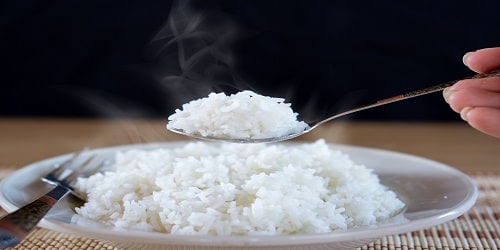Rice is one of the most consumed cereals in the world. Due to its organoleptic properties, its easy cooking, and its nutritional characteristics, it is of high culinary interest. But does it contain gluten?
It is common to associate the word cereal with this set of proteins, since gluten, as it is known, has its origin exclusively in the seeds of these plants. And no, not all cereals have gluten. Rice, in fact, is among those that are free of this substance, although we must take certain care when eating it if we suffer from any type of celiac disease or gluten intolerance.
Does rice have gluten?
The immediate answer is no. Rice ( Oryza sativa ) is a cereal, yes, but not rainfed, and, therefore, does not naturally contain gluten. As we will now see, its seeds are free of the proteins that make up gluten in any of its varieties (white, whole wheat, basmati or jasmine, for example), since the species as a whole does not produce it and does not we can find it in its seeds.
What is gluten
Gluten is, in reality, a set of small proteins, contained exclusively, as we said, in the seeds of dryland cereals. Wheat gluten, which is the most characteristic and present, is made up of proteins called glutenins and gliadins (90%), lipids (8%), and carbohydrates (2%). It is these two proteins that cause the problems suffered by people with celiac disease or other related diseases.
For the plant, glutenins and gliadins play an important role in nutrition and grain development. For example, they are a source of energy for the grain embryo and also help protect it from insects and diseases.
In the food industry, gluten, as this protein mixture is known, plays an important role in the texture and consistency of products. In fact, over the years, wheat varieties with a greater amount of gluten have been selected due to the result it provided to baking, much more attractive and palatable than gluten-free products, although this is changing in recent times with the development of food technology.
At a nutritional level, gluten has almost no interest for humans (or mammals) due to its low biological value. This means that they are poor-quality proteins, that we cannot easily assimilate or that they contain amino acids that are not of interest. Therefore, gluten, despite being made up of 90% protein, has no nutritional value, although it does have culinary value.
Nutritional composition of rice
Rice is a cereal rich in starch, a complex carbohydrate that is made up of two types of molecules: amylose and amylopectin. The proportion of each of these molecules determines the culinary characteristics of the rice: the higher the proportion of amylopectin, the more viscous and sticky the rice will be.
It is also a good source of protein (7%) and vitamins B3 and B6. However, white rice, which is the most common, undergoes a refining process that removes most of the bran and germ from the grain. This leads to the loss of nutrients, such as iron, zinc, and B vitamins.
If we take as reference the values provided by the Spanish Nutrition Foundation (FEN), we see that the nutritional values of (white) rice are, for every 100 g of rice:
- Energy (Kcal): 381
- Proteins (g): 7
- Total lipids (g): 0.9
- Saturated fatty acids (g): 0.21
- Monounsaturated fatty acids (g): 0.23
- Polyunsaturated fatty acids (g): 0.32
- Cholesterol (mg/1000 kcal) : 0
- Carbohydrates (g): 86
- Fiber (g): 0.2
- Water (g): 5.9
- Calcium (mg): 10
- Iron (mg): 0.5
- Iodine (µg): 2
- Magnesium (mg): 13
- Zinc (mg): 0.2
- Sodium (mg): 6
- Potassium (mg): 110
- Phosphorus (mg): 100
- Selenium (μg): 7
- Thiamin (mg): 0.05
- Riboflavin (mg): 0.03
- Vitamin B6 (mg) : 0.30
- Vitamin E (mg): 0.3
In general, brown rice contains more protein and fiber, as is the case with other cereals, although its texture and flavor are less attractive, a priori.
Can celiacs eat rice?
Given all of the above, we can say that rice, in any of its varieties or products, is suitable for celiacs as long as it has not been contaminated with products containing gluten (for example, in a derived product).
However, if you suffer from celiac disease, it is important to make sure that we have cereals that are clean of this substance. As? But haven’t we said before that rice is naturally gluten-free? Yes, that is correct, however, there are treatments in which cross-contamination can occur.
Does rice flour contain gluten?
Cross-contamination can occur in a thousand ways, although the easiest is what happens in flour milling, whose factories do not always work with a single cereal, but with several, including wheat and barley. This makes it possible for tiny, but harmful, amounts of gluten to be transmitted to the product. The same can happen in other cases, especially in organic products where tools and procedures have not been used to ensure that there is no cross-contamination.
Therefore, although rice flour, by itself, does not contain gluten, we can find it as a result of said cross-contamination. This means that we must take special caution when consuming this product, which, although it does not have to keep us up at night, a little prevention by observing the labeling can save us a few disappointments and health problems.
